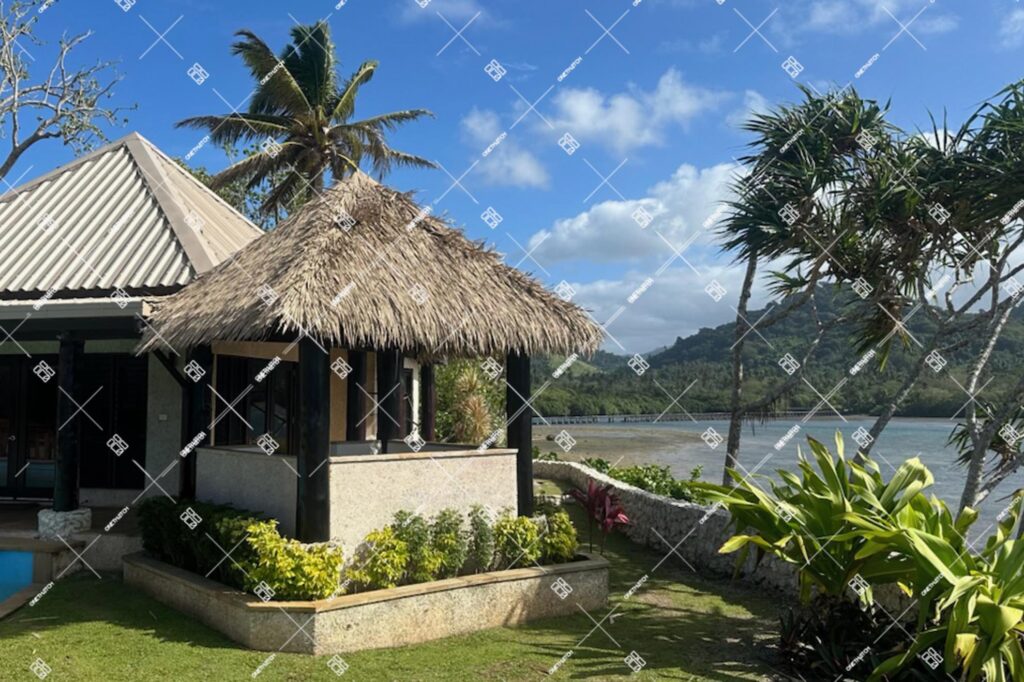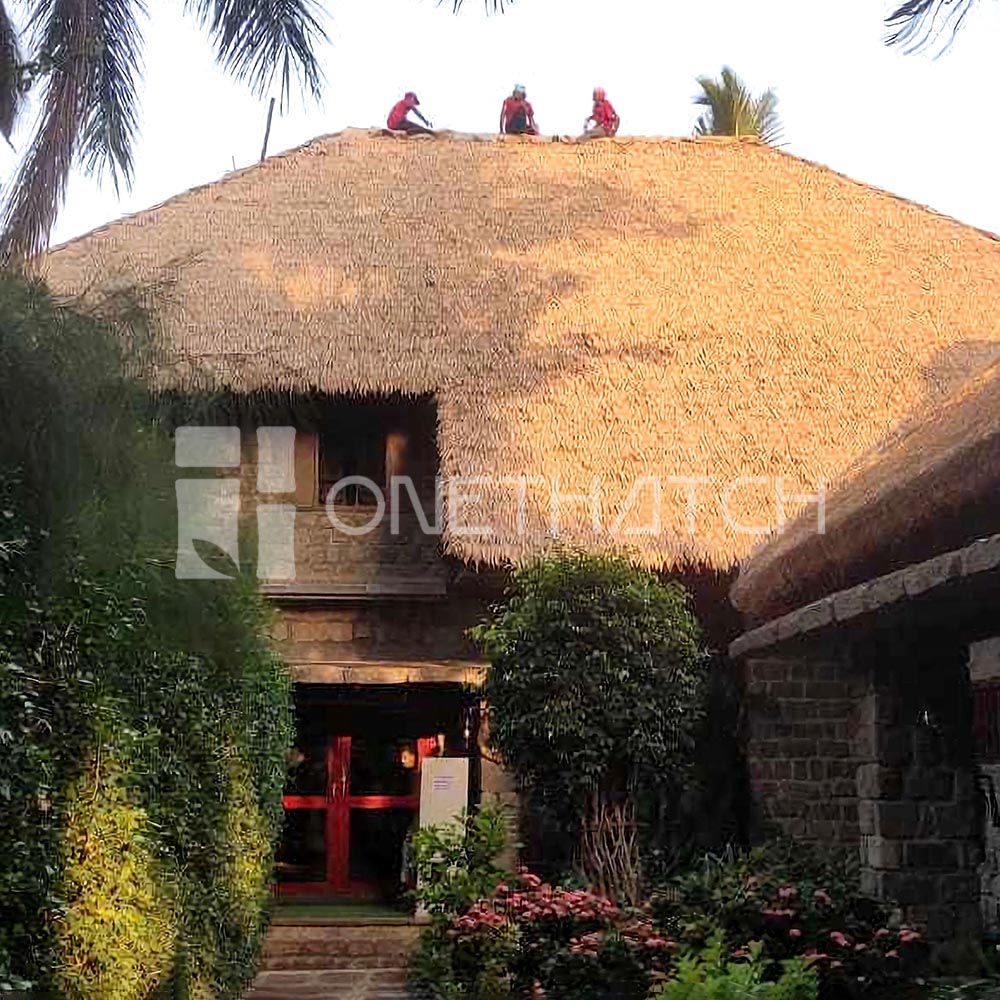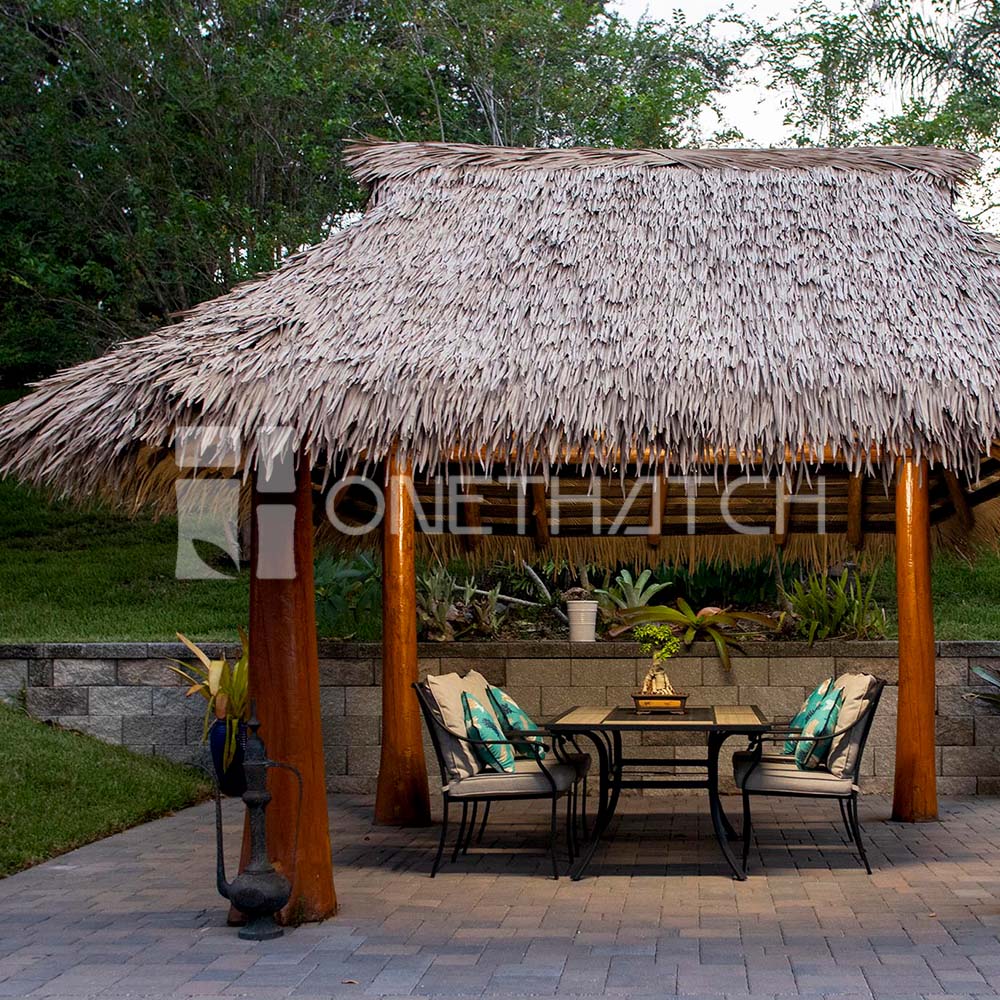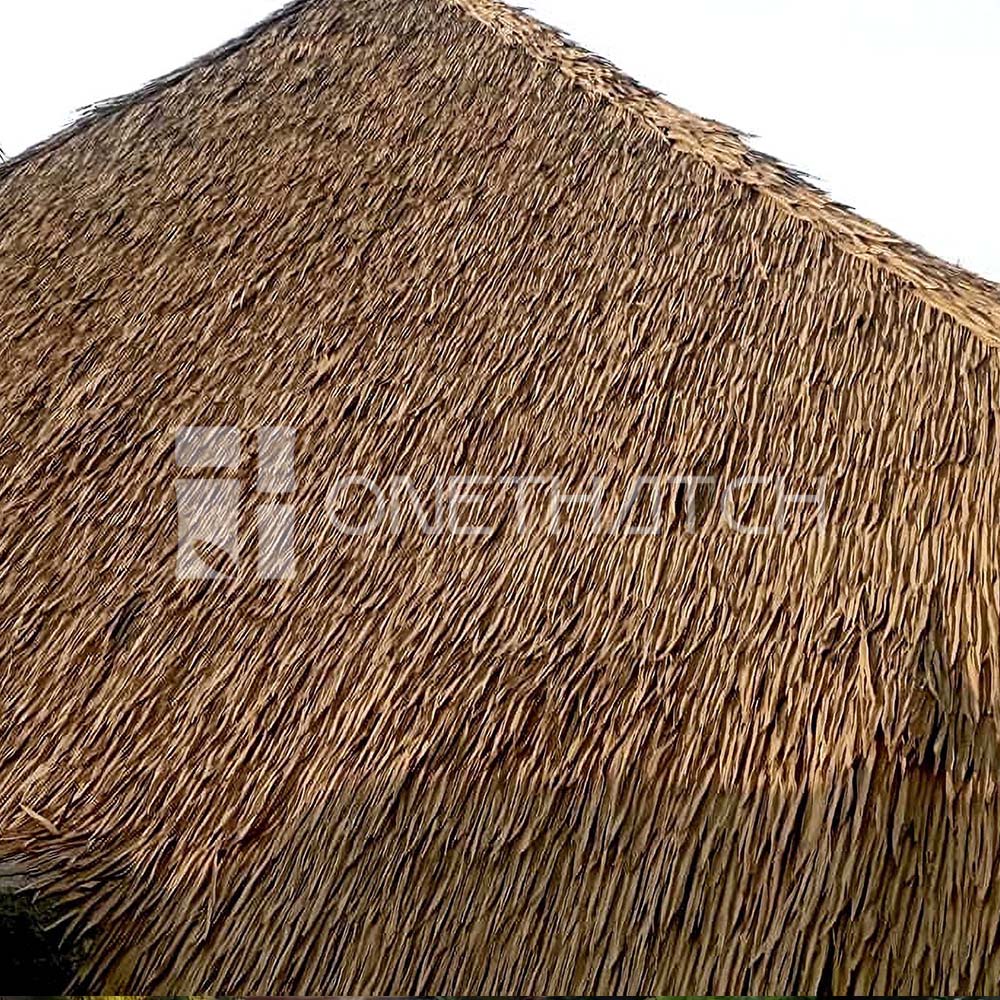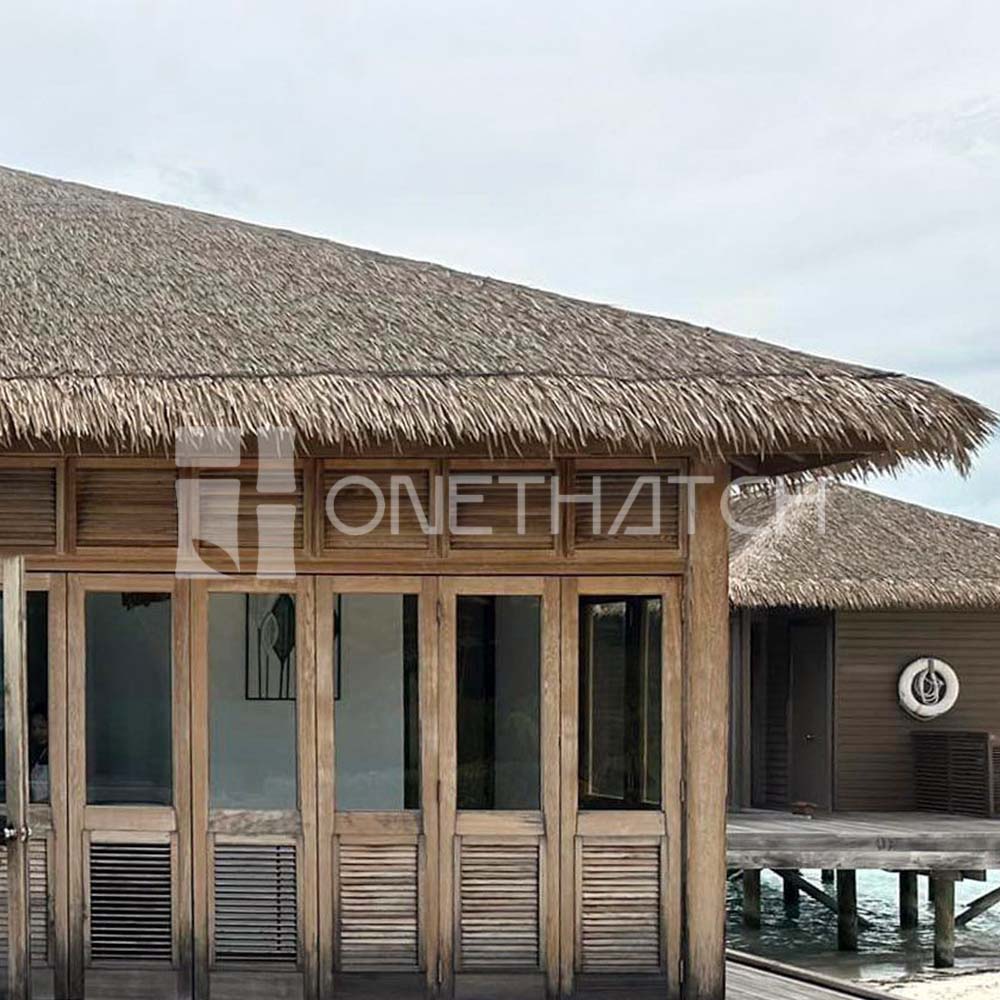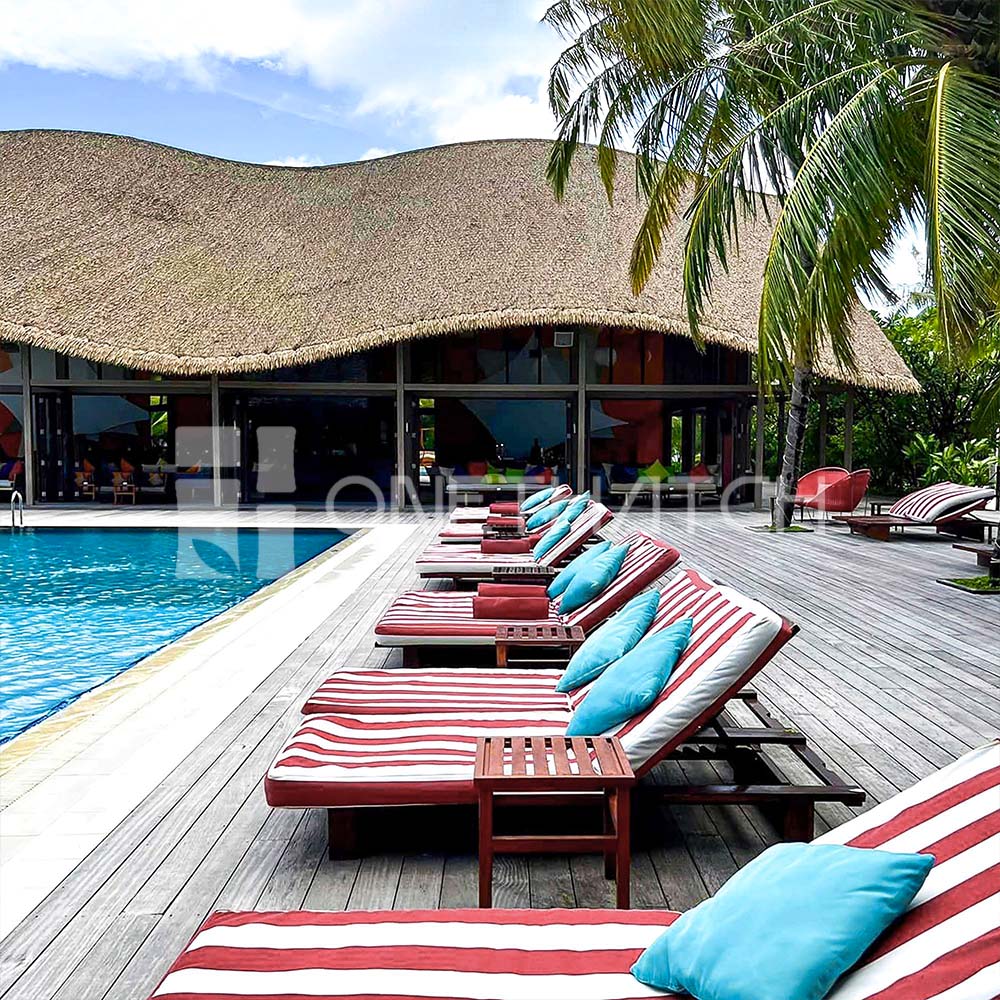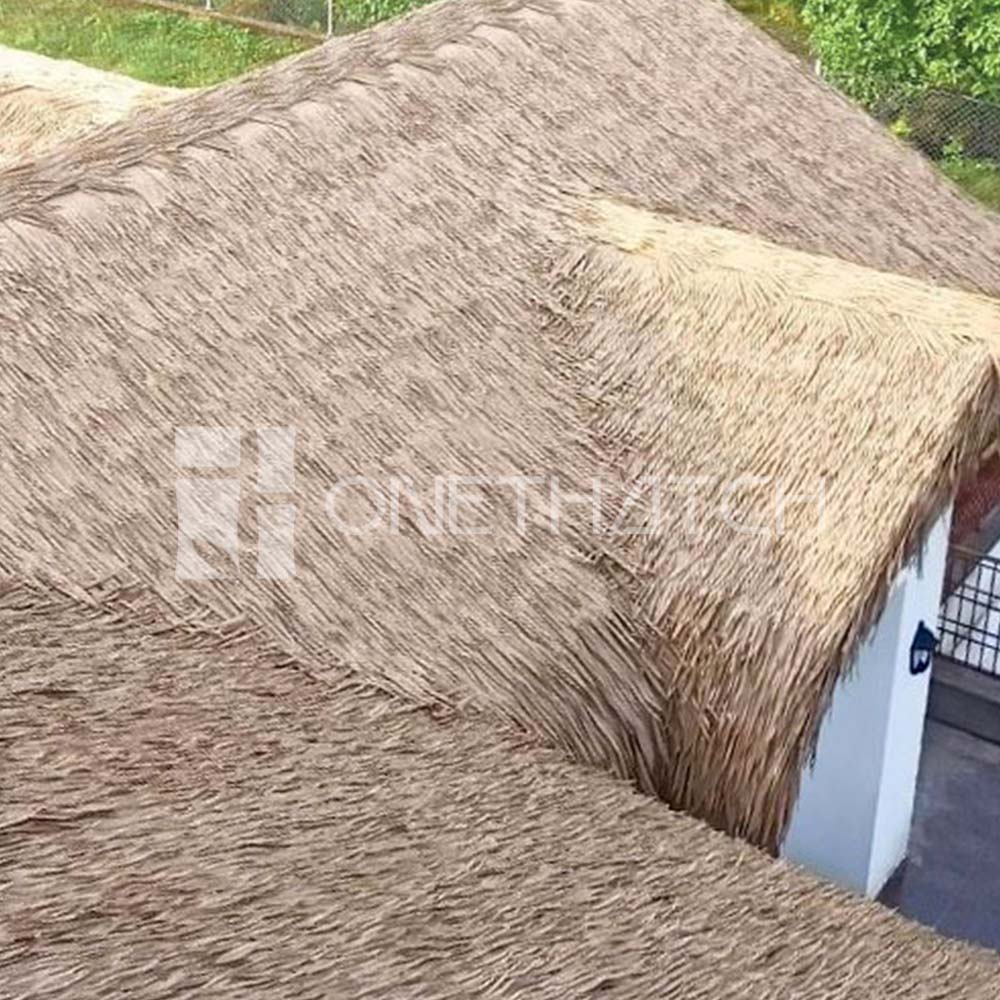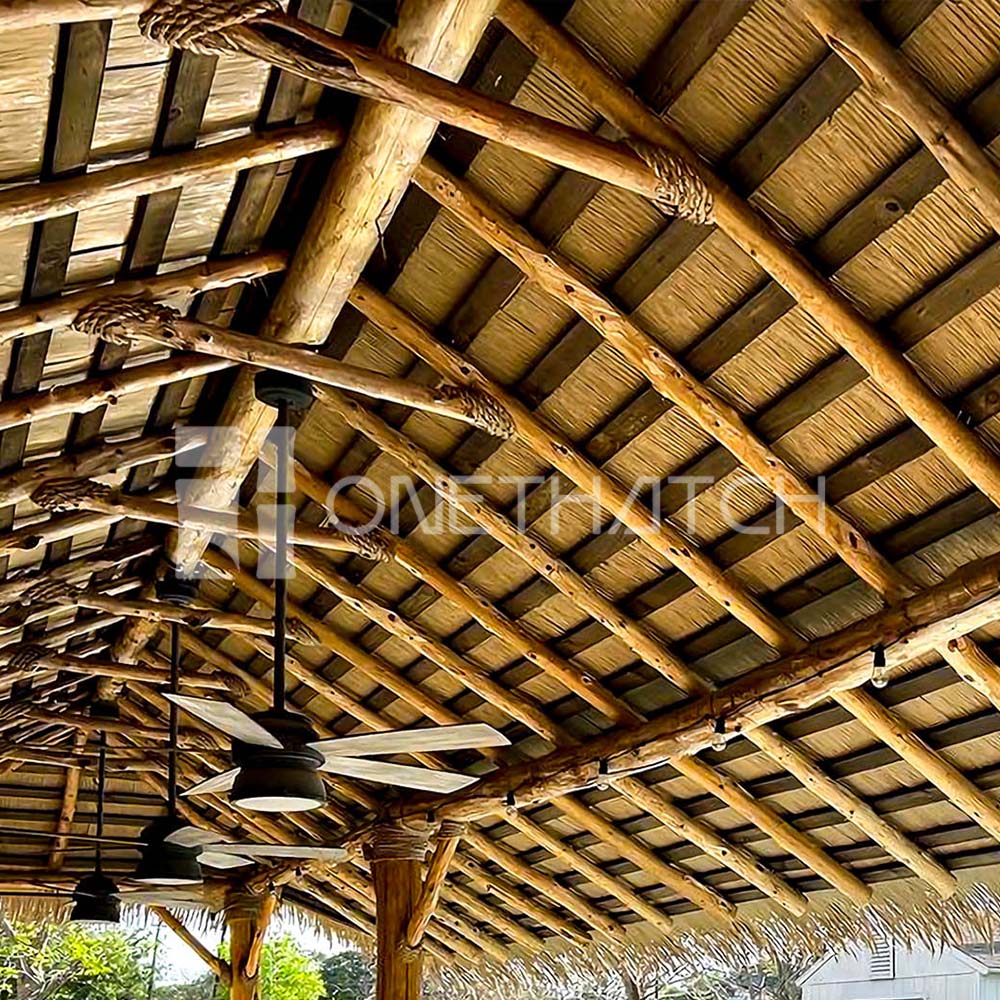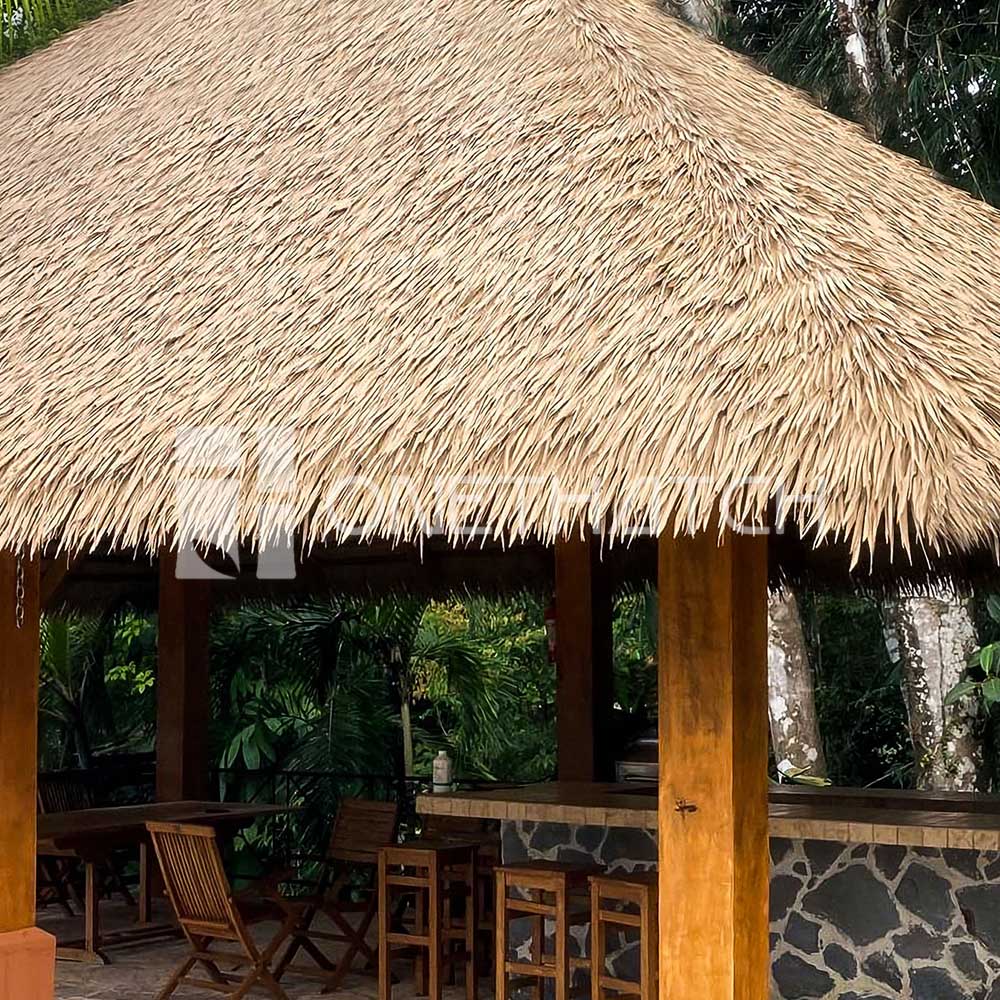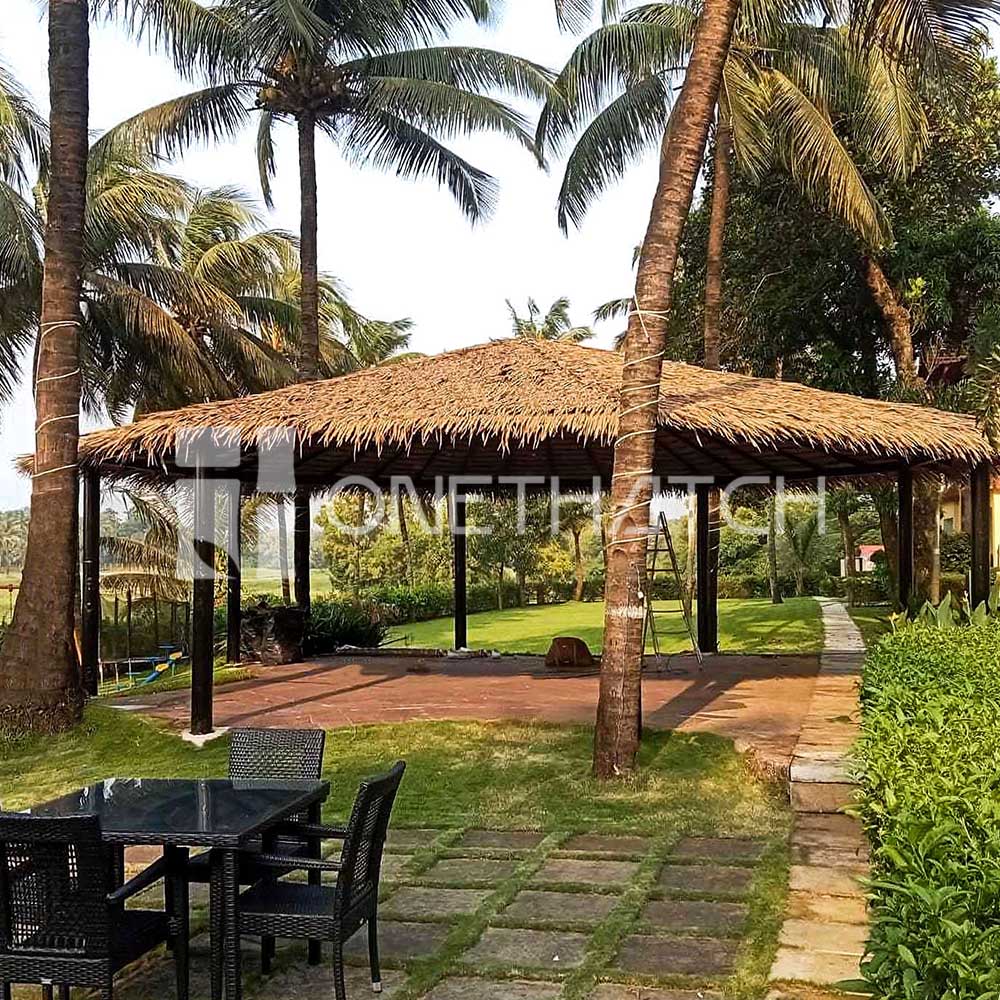Is Synthetic Thatch Fire-Resistant?
One of the most common questions we hear from resort owners, architects, and insurance companies is:
“Is palma sintética fire-resistant?”
The answer: Yes—if it’s certified Class A fire rated.
Unlike natural palm or grass thatch, which is highly flammable and often restricted by building codes, ONETHATCH® Synthetic Thatch has been engineered and lab-tested to achieve the highest fire safety standard (Class A). This certification ensures that our product is safe for resorts, restaurants, theme parks, and palapa structures, where both aesthetics and safety are non-negotiable.
What Does Class A Fire Rated Mean?
Roofing materials are tested under ASTM E108 / UL 790 standards. A Class A fire rating indicates that the product has passed rigorous fire performance tests, including:
Flame Spread Resistance – Stops flames from travelling across the roof.
Burn-Through Resistance – Prevents fire from penetrating to the roof deck.
Intermittent Flame Resistance – Withstands repeated flame exposure without igniting.
This means your restaurant roof, resort villa, or palapa thatch hut will maintain its beauty while providing critical fire safety protection.
Synthetic Thatch vs. Natural Thatch
| Característica | Natural Thatch (Palm/Grass) | ONETHATCH® Synthetic Thatch |
|---|---|---|
| Resistencia al fuego | Altamente inflamable | Class A fire rated |
| Insurance Approval | Often denied | Widely accepted |
| Vida útil | 2–5 years | Más de 20 años |
| Mantenimiento | Needs chemical treatments | Minimal upkeep |
| Building Code | Frequently restricted | Globally compliant |
Why Resorts and Restaurants Choose Fire-Rated Synthetic Thatch
Insurance Compliance – Most insurers now require certified fire-resistant synthetic thatch for coverage.
Peace of Mind – Guests, staff, and property remain protected.
Aesthetic Value – Achieve the tropical palapa thatch look without compromising safety.
Cost Savings – Long lifespan reduces re-roofing and maintenance costs.
Sustainability – Made from recyclable, eco-friendly polymers (Non-PVC).
Applications for Class A Fire Rated Artificial Thatch
Palapas & Beach Bars – Iconic island look thatched roofs with fire safety.
Resort Roof Solutions – Villas, cabanas, and bungalows.
Restaurant Roofs – Safe tropical thatched dining spaces.
Theme Parks & Waterparks – Decorative yet compliant.
Commercial Projects – Hotels, eco-lodges, and tourism developments.
Step-by-Step: Choosing the Right Fire Rated Thatch
-
Check Certification – Ensure the product is Class A fire rated.
-
Ask Insurance Provider – Confirm compliance for coverage.
-
Evaluate Lifespan – Look for warranties of 20+ years.
-
Review Aesthetics – Select styles that mimic authentic palm or reed.
-
Plan Installation – Work with experienced contractors.
The Bottom Line
If you’re planning a resort roof solution, restaurant renovation, or palapa project, don’t risk safety with natural grass. Choose ONETHATCH® Synthetic Thatch Fire Rated—the perfect balance of authentic design, Class A fire protection, and long-term durability.
Preguntas más frecuentes
Q: Is synthetic thatch fire-resistant?
A: Yes. ONETHATCH® Synthetic Thatch is certified Class A fire rated, meaning it resists flame spread, prevents burn-through, and meets the highest safety standard for roofing.
Q: Why do insurance companies require certified products?
A: Insurance providers need assurance that roofing materials meet fire safety codes. Certified synthetic thatch reduces liability and ensures coverage approval.
Q: How long does synthetic thatch last compared to natural?
A: Natural palm or reed roofs last only 2–5 years, while ONETHATCH® synthetic thatch lasts Más de 20 años with minimal maintenance.
Q: Can synthetic thatch be used for commercial projects?
A: Absolutely. It’s the preferred choice for resorts, restaurants, hotels, and theme parks worldwide due to its safety and compliance.
Q: How to Install NIPA Engineered Thatch Palm?
A: Installing NIPA Engineered Thatch Palm is straightforward and does not require specialised labour. Here’s a step-by-step guide.


